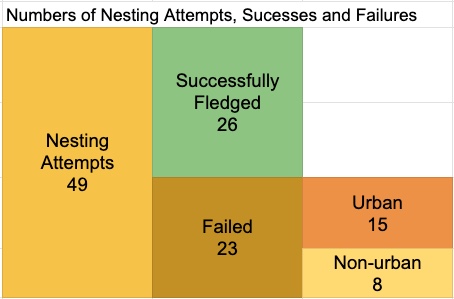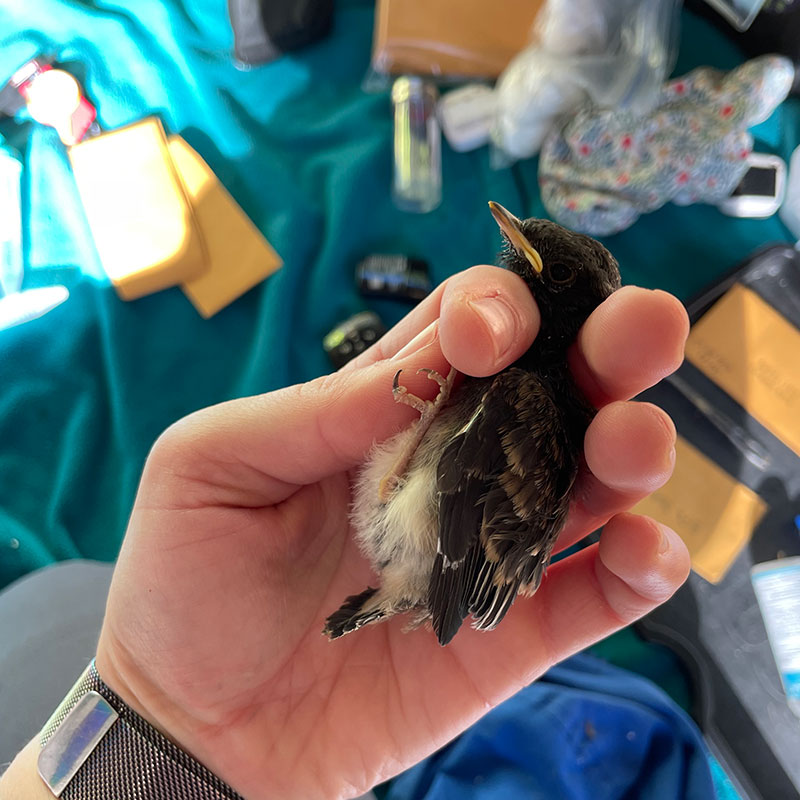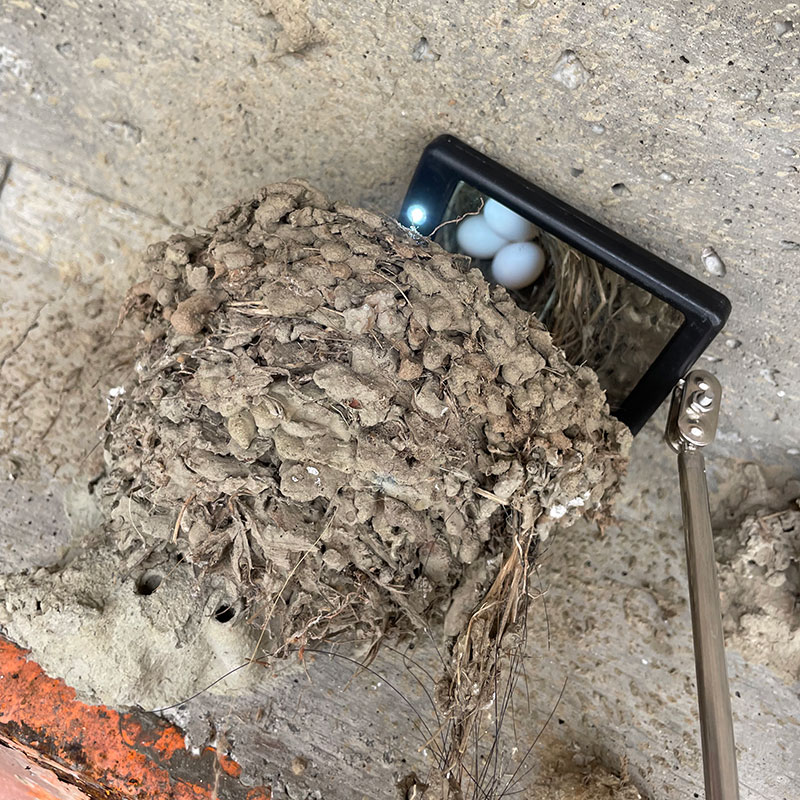Project Phoebe: Setup and Preliminary Observations
Back in February, 2023 we told you about Project Phoebe; a research project designed to measure the impact urban and rural environments have on wildlife.
The project is being run by three graduate students from UC Davis. They chose the Black Phoebe, a small, insect-eating bird well-known to this region, as a model system. The region involved is the Central Valley – Davis, West Sacramento and Woodland.
Birds are considered indicator species because they are more sensitive to changes in land use and climate than humans. They are relatively easy to find, count, and identify and birds higher on the food chain indicate the diversity of species lower on the chain. Since birds reproduce faster than humans, we can also see how they are adapting to various conditions.
The Project Phoebe research team finished up the first of three field seasons back in August 2023 and submitted their first report, which you can download below. This article provides some highlights from the report.
What are the measurable differences between urban and non-urban environments?
Urbanization is a major threat to biodiversity. Some species persist and even thrive in urban environments, but many do not, thus leading to monocultures of wildlife.
There are several measurable differences between urban and non-urban conditions. This study focuses on the following.
- higher temperatures
- different predator communities
- higher concentrations of chemical pollutants
- higher noise levels
Just by taking a hike at the nature preserve, you, as a human being, can sense these differences. The air is free of exhaust fumes and the temps are lower than in downtown Sacramento, for example. Predators? There are predators on the preserve. We have signs warning people to be alert to bobcats, mountain lions and rattlesnakes. In the city, you mostly have to watch out for cars and criminals!
This is why the Cache Creek Nature Preserve is a critical study site for the project. The riparian and other habitats it has restored and protects serve as a control to the urban study sites.
All together the research team monitored 49 nesting attempts for 35 different breeding pairs in
- three cities,
- four nature preserves, and
- several agricultural areas.
Methods of Measurement
There are many ways that scientists can measure the impacts environmental conditions have on wildlife. In this study, the researchers used a wide variety of methods.
Please note: All activities were conducted by trained individuals and approved under federal, state, and university permits–please do not attempt to handle wild birds or their nests yourself.
Nest monitoring
Once nests were located the team visited every 3-5 days to monitor nesting phenology, number of eggs, number of nestlings and successful fledglings.
Morphological measures
The team banded 34 adult Phoebes and 117 nestlings at 29 nests. The banding was done 14 days after hatching to be consistent between locations.
During banding, the team collected blood samples to measure stress hormones, feathers for exposure to heavy metals and quantified the presence of mites. They also performed size measurements.
Photo by Sage Madden, Project Lead

Habitat features
The team quantified features of the biotic and abiotic habitat surrounding each nest; ambient temperatures, nest predator activity and noise levels. They also noted such characteristics as canopy cover, presence of native and non-native vegetation and proximity to water.
Diet
The team collected multiple fecal sacs for many nestlings for future genetic diet analysis.
Behavioral observations
Behavior is the front line of an animal’s response to its environment. Do their behaviors change between environments? Do the changes help or hinder their survival and reproductive success?
Examples of observable behaviors are
- aggressiveness
- exploration
- foraging strategies
- song characteristics
- flight initiation distance
- tail flicking rate
- parental nest visits
How the team accomplished these observations is inventive and fascinating and worth the time to read the original report.
Public Engagement & Outreach
The research team was able to build relationships with a number of people who had Black Phoebe nests on their property. In almost all cases, property-owners were enthusiastic about the project and receptive to information about Black Phoebes and about the laws protecting nesting birds. Building these relationships and being able to monitor the nests was integral to the success of the project.
Preliminary Findings
Of the 49 nesting attempts the team monitored, more than half successfully fledged some offspring. Of the failed nests, 65% were in urban areas.

Many of the urban nests were predated by scrub jays. The team witnessed scrub jay predation attempts, and homeowners reported scrub jay predation of nests on their homes.
There were also several heat waves during the monitoring season. Temperatures at the urban nest locations reached 113-130 degrees at times, while temps near the non-urban nests peaked at the high-90 degrees.
Some nests failed completely during the heat waves and of the nestlings that survived, those in the urban areas were smaller than those in the non-urban areas.


Images of an urban nestling (left) and a riparian nestling (right) that hatched on the same day. Both nestlings were 14 days old at the time of this photo. Photos by Sage Madden, Project Lead.
The team also made some interesting observations about the difference in numbers of nests between urban and non-urban locations. In summary, there are more nests in urban areas. This is concerning, though, since nests and fledglings are not as viable and robust.

The birds may be dispersing from their native, riparian habitat to urban areas for two reasons.
Black Phoebes need a specific nest site configuration (a flat vertical surface under an overhang), a configuration that is boundless in urban areas.
Riparian habitat is greatly diminished making it harder for Phoebes to find good nest sites.
Indeed, even in the Cache Creek Nature Preserve, nests were found under a bridge and the boardwalk rather than trees.
Photo by Sage Madden, Project Lead
These observations have motivated the team to plan a riparian nest site supplementation project for their upcoming field season.
Undergraduate Projects
In the report, you will also find summaries of several side projects completed by undergraduate students on the team.
- Pollution Burden and Reproductive Success
- Nestling Vocalizations and Ambient Noise
- Flight Initiation Distance and Reproductive Success
- Adult Song and Ambient Noise
- Bill Size and Urbanization
The report contains even more interesting and concerning observations, along with some ideas for further study and mitigation.
We’re honored to be able to play a role in such a significant study and look forward to future reports.
Learn more about Project Phoebe on their website.
